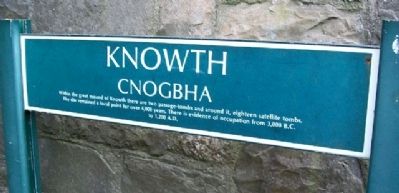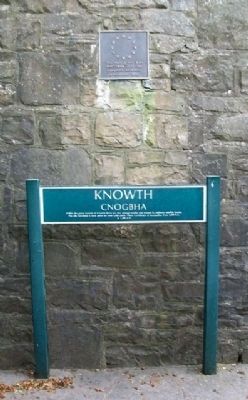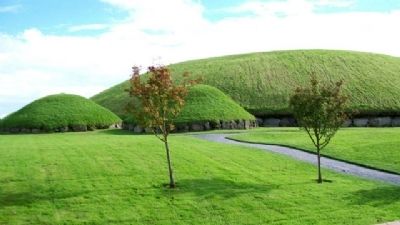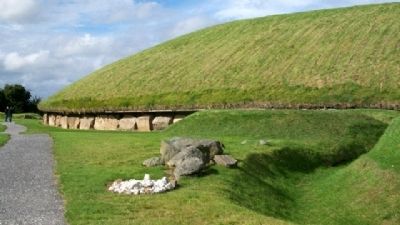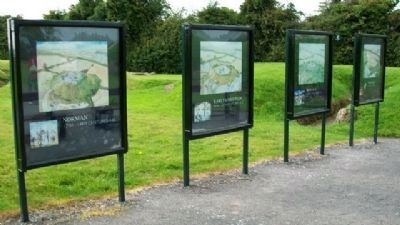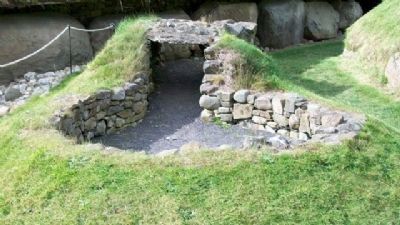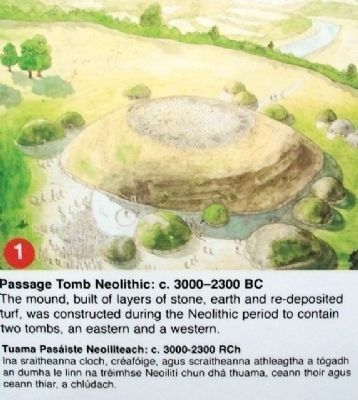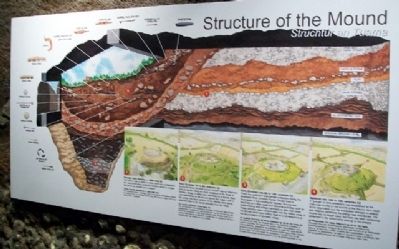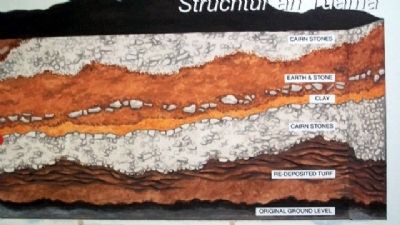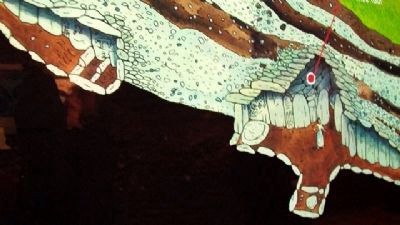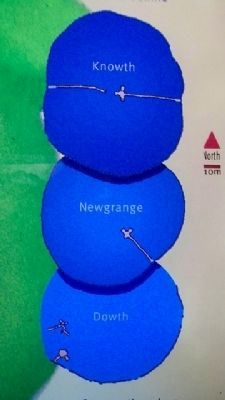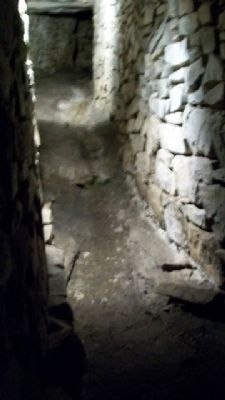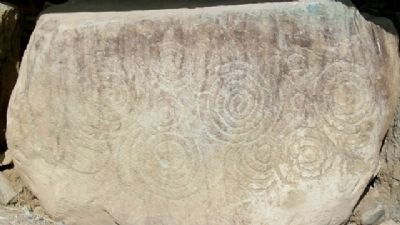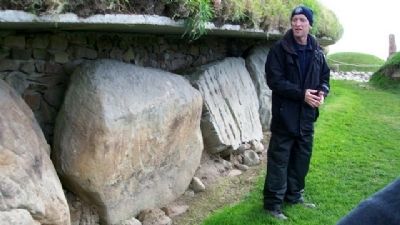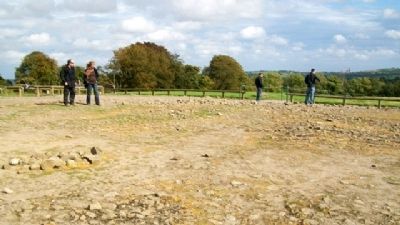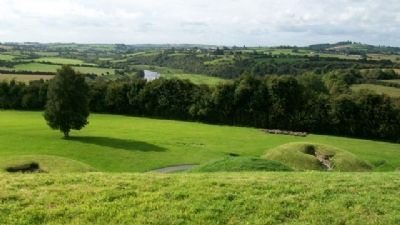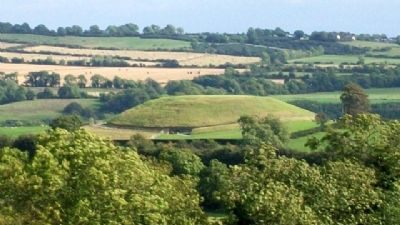Near Newgrange in County Meath, Leinster, Ireland — Mid-East (and Dublin)
Knowth / Cnogbha
Within the great mound of Knowth there are two passage-tombs and around it, eighteen satellite tombs. The site remained a focal point for over 4,000 years. There is evidence of occupation from 3,000 B.C. to 1,200 A.D.
This project has been part-financed by the European Regional Development Fund
Erected by Office of Public Works / Oifig na nOibreacha Poiblí.
Topics. This historical marker is listed in these topic lists: Anthropology & Archaeology • Cemeteries & Burial Sites • Landmarks • Man-Made Features • Settlements & Settlers.
Location. 53° 42.105′ N, 6° 29.45′ W. Marker is near Newgrange, Leinster, in County Meath. Marker is at the access gate to the Knowth Megalithic Tombs, on the road between the villages of Newgrange and Crewbane. Entrance to this World Heritage Site is by guided tour from the Brú na Bóinne Visitors Centre (at 53° 41.674′ N, 6° 26.778′ W), about 1.5 miles west of the village of Donore. Touch for map. Touch for directions.
Other nearby markers. At least 8 other markers are within 8 kilometers of this marker, measured as the crow flies. The Woodhenge/Pit circle / The Winter Soltice (approx. 1.4 kilometers away); Saint Patrick on the Hill of Slane (approx. 3.8 kilometers away); Slane Abbey (approx. 3.8 kilometers away); Duleek 1916 - 1981 Hunger Strike Monument (approx. 6.6 kilometers away); St Mary's Abbey (approx. 7 kilometers away); Connell's House (approx. 7.1 kilometers away); Parochial House (approx. 7.1 kilometers away); The Lime Tree (approx. 7.1 kilometers away).
Also see . . . Knowth Megalithic Passage Tomb. (Submitted on February 6, 2010.)
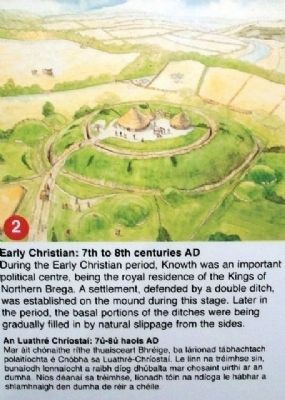
September 21, 2009
8. Early Christian: 7th to 8th centuries AD
During the Early Christian period, Knowth was an important political centre, being the royal residence of the Kings of Northern Brega. A settlement, defended by a double ditch, was established on the mound during this stage. Later in the period, the basal portions of the ditches were being gradually filled in by natural slippage from the sides.
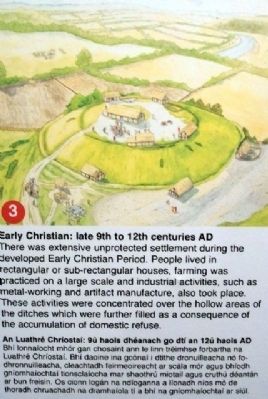
September 21, 2009
9. Early Christian: late 9th to 12th centuries AD
There was extensive unprotected settlement during the developed Early Christian Period. People lived in rectangular or sub-retangular houses, farming was practiced on a large scale and industrial activities , such as metal-working and artifact manufacture, also took place. These activities were concentrated over the hollow areas of the ditches which were further filled as a consequence of the accumulation of domestic refuse.
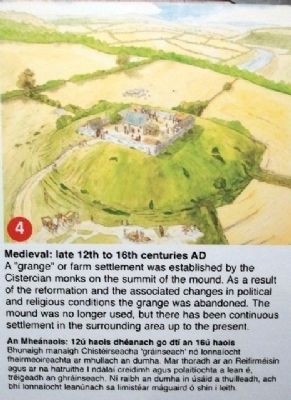
September 21, 2009
10. Medieval: late 12th to 16th centuries AD
A "grange" or farm settlement was established by the Cisterican monks on the summit of the mound. As a result of the reformation and the associated changes in political and religious conditions the grange was abandoned. The mound was no longer used, but there has been continuous settlement in the surrounding area up to the present.
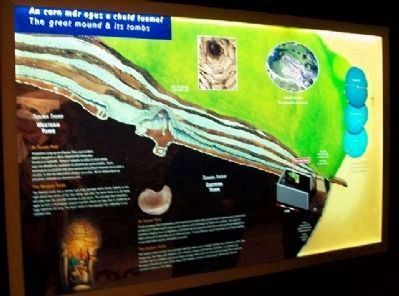
September 21, 2009
13. The great mound & its tombs Marker
The Eastern Tomb
Credits. This page was last revised on July 24, 2018. It was originally submitted on February 6, 2010, by William Fischer, Jr. of Scranton, Pennsylvania. This page has been viewed 1,213 times since then and 5 times this year. Photos: 1, 2, 3, 4, 5, 6, 7, 8, 9, 10, 11, 12, 13, 14, 15, 16, 17, 18, 19, 20, 21. submitted on February 6, 2010.
